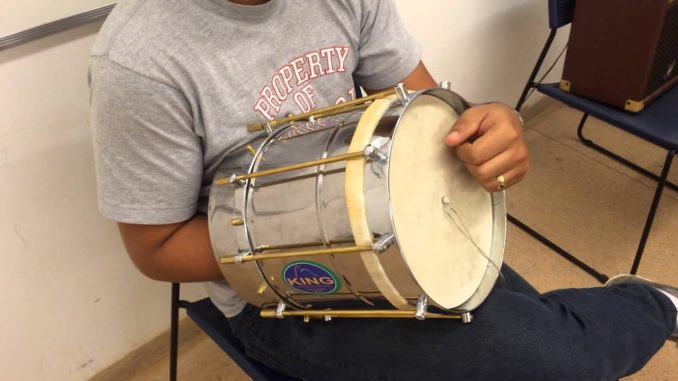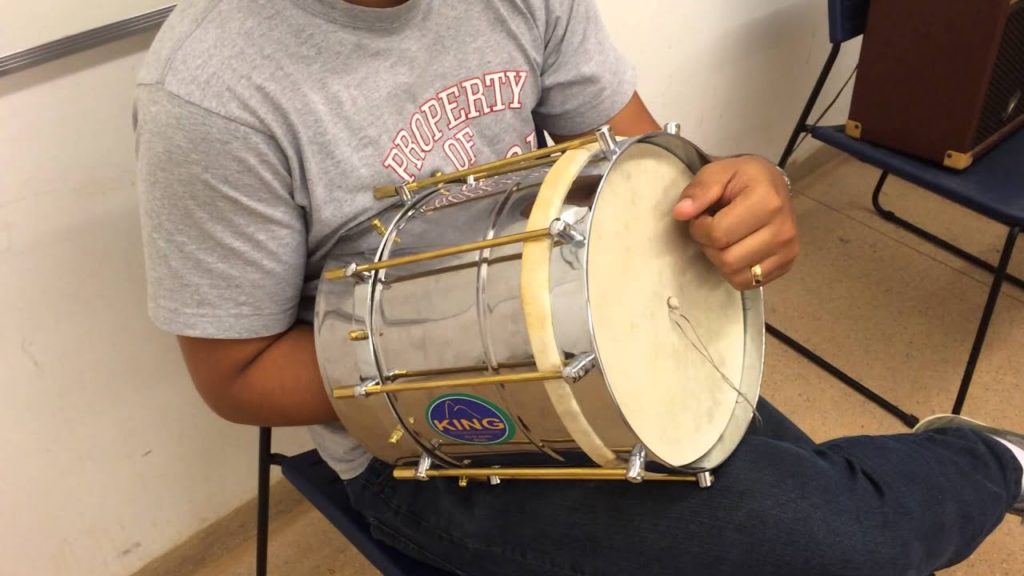
Cuica is a traditional Brazilian percussion instrument that has gained popularity around the world for its unique and distinctive sound. Also known as a “friction drum” or “talking drum,” the cuica is an important instrument in samba music and is often used to create a playful, energetic atmosphere in a variety of musical settings. In this article, we will explore the history, construction, and playing techniques of the cuica, as well as its cultural significance in Brazil and beyond.

What is a Cuica?
History and Origins of the Cuica
The origins of the cuica can be traced back to Africa, where it was used in traditional music and dance ceremonies. The instrument was brought to Brazil during the slave trade, and its use became widespread among Afro-Brazilian communities. The cuica was originally used in the religious ceremonies of the Candomblé religion, where it was believed to have spiritual powers and was used to communicate with the spirits of ancestors. Over time, the instrument became more widely used in secular music, particularly in the development of samba music in Brazil.
Cuica Construction
The cuica is a simple instrument consisting of a cylindrical drum made of wood or metal, with a length of rope or bamboo attached to the inside of the drumhead. The rope or bamboo is held in one hand and rubbed with a damp cloth or piece of rubber, producing a distinctive high-pitched squeaking sound. The other hand is used to play the drumhead with a stick or the fingers, producing a deep, resonant sound. The instrument is typically played in a vertical position, with the player holding the drum between their knees or against their chest.
Cuica Playing Techniques
Playing the cuica requires a combination of friction and percussion techniques. To produce the distinctive squeaking sound, the player must apply pressure to the rope or bamboo while simultaneously rubbing it with a damp cloth or piece of rubber. The pressure applied to the rope or bamboo can be adjusted to change the pitch of the squeak, allowing for a wide range of musical expression.
To play the drumhead, the player can use a stick or the fingers to produce a variety of rhythms and tones. The drumhead can be played in a variety of ways, including tapping, slapping, and rolling, each producing a unique sound. The player can also vary the tone of the drumhead by changing the amount of pressure applied, allowing for a greater range of expression and musical possibilities.
Cuica Cultural Significance
The cuica has a rich cultural significance in Brazil, particularly in Afro-Brazilian communities where it is closely associated with the development of samba music. The instrument has been used in a variety of musical genres, from traditional folk music to modern pop and rock. Its distinctive sound has also been incorporated into the music of other cultures, particularly in Latin America and the Caribbean.
The cuica is also an important symbol of Brazilian identity and culture, representing the country’s rich musical heritage and its multicultural roots. The instrument has been featured prominently in cultural events such as the Carnival of Brazil, where it is used to create a festive, joyful atmosphere. It has also been featured in films and television shows, helping to spread awareness of its unique sound and cultural significance around the world.
What does the Cuica sound like?
The cuica has a unique and distinctive sound that is difficult to describe in words. Its sound is a combination of a deep, resonant drum tone and a high-pitched squeak, produced by the friction of the rope or bamboo attached to the inside of the drumhead. The squeaking sound is often described as a “laughing” or “crying” sound, and can be manipulated by adjusting the pressure applied to the rope or bamboo. When played in a rhythmic pattern, the cuica can produce a variety of dynamic and expressive sounds, ranging from playful and joyful to mournful and introspective. The sound of the cuica is an essential component of samba music and adds a unique and vibrant texture to any musical ensemble.
How is the Cuica played?
The cuíca, known for its captivating, often squeaky sound, boasts a unique playing style that combines hand movements and a special wooden stick. Here’s a breakdown of the cuíca’s playing techniques:
Holding the Instrument:
- The cuíca is held under one arm, typically the left, at chest height.
- A shoulder strap or harness helps distribute the weight and allows for better control during playing.
The Magic of the Stick:
- A key element in the cuíca’s sound is a thin wooden stick, traditionally made of bamboo, attached to the center of the drumhead’s inner surface.
- This stick, often rosined (coated with a sticky substance like pine resin) for increased friction, is the heart of the instrument’s voice.
Playing Techniques:
- Rubbing the Stick: The player holds a damp cloth in their right hand and uses it to rub the rosined stick back and forth. This creates a characteristic friction sound that defines the cuíca’s character.
- Pressure on the Drumhead: The fingers of the right hand also play a crucial role. By applying varying degrees of pressure on the drumhead near the stick, the player controls the pitch of the sound. Pushing down increases the pitch, while loosening the pressure creates a lower sound. This technique allows for expressive pitch bends and variations.
- Rhythmic Control: The combination of rubbing the stick and applying pressure allows the player to create a variety of rhythms with the cuíca. From simple beats to intricate patterns, the skilled manipulation of the stick and drumhead pressure brings the cuíca to life.
Additional Notes:
- Variations: There might be slight variations in playing styles depending on the region and musical genre. Some players might incorporate tapping the drumhead for percussive accents.
- Coordination: Mastering the cuíca requires good hand-eye coordination. The player needs to maintain a steady rhythm while simultaneously rubbing the stick and applying pressure for pitch control.
- Embellishments: Experienced players can add embellishments like tremolos (rapid back-and-forth motion) or short bursts of sound to further enrich the cuíca’s voice.
By combining these techniques, cuíca players can produce a wide range of sounds, from growls and squeaks to deep, resonant tones. The cuíca’s versatility and unique character make it a beloved instrument in Brazilian music, particularly genres like samba and forró.
Conclusion
The cuica is a fascinating and unique percussion instrument that has played an important role in the development of samba music and Afro-Brazilian culture. Its distinctive sound, produced by a combination of friction and percussion techniques, has captured the imaginations of musicians and audiences around the world. Whether played in traditional folk music or modern pop and rock, the cuica remains an important symbol of Brazilian identity and culture, representing the country’s rich musical heritage and its multicultural roots.
What is a Cimbalom?
What is a Stylophone?
What is a Zurna?
What is an Otomatone?
What is a Tam-Tam?
What is a Kora?
